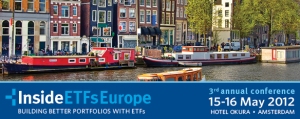![]() Courtesy of Paul Amery, IndexUniverse.com
Courtesy of Paul Amery, IndexUniverse.com
Hedge funds and index trackers are polar opposites: the highest- and lowest-fee ends of the investment product scale.
And yet a surprising number of hedge funders are fans of indexing. Reportedly, many are closet admirers, buying ETFs and index funds for their own portfolios—as though stepping out of a Ferrari and into a well-used family diesel when away from the public gaze.
Others have switched career to embrace tracker funds. Alan Miller, manager of a fund of ETFs at SCM Private, was once a hedge fund investor at New Star. Victor Haghani, partner at Long Term Capital Management in the 1990s, now looks after a $200 million portfolio of index funds and ETFs, Elm Partners.
Lars Kroijer, who ran an equity hedge fund, Holte Capital, between 2002 and 2008, is another convert. But the Dane no longer manages client money himself (though he sits on several fund boards). Instead, he’s turned author.
Following a well-received account of his hedge fund experiences (“Confessions of a Hedge Fund Manager”), published three years ago, Kroijer has written a new book, “Investing Demystified”, with the objective of explaining why index investing is the rational approach for almost all of us.
To continue reading the full story from IndexUniverse, please click above IU logo.



